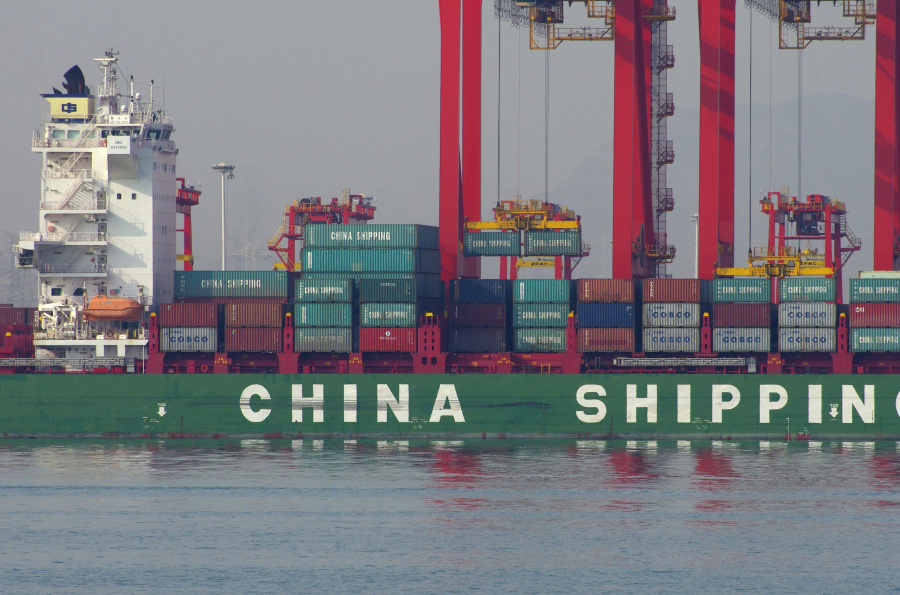MONTHLY ECONOMIC UPDATE
MIXED PICTURE TO GLOBAL MARKETS
By Anthony Lawry

China's economic outlook appeared to be another mixed picture to global markets in the month of December. A manufacturing purchasing manager's index, commonly referred to as Caixin, rose to a three-year high in December. The index closed at 51.9 which was higher than its forecasts of 50.7 and a great improvement from the month of November at 50.9 (a number below 50 represents a decrease in purchasing power while a number above 50 represents growth in purchasing power). Reports from other indices showed that manufacturing and exports rose in December, but at a slightly slower pace from November. According to China's Customs Bureau, the value of total goods exported fell by 6.1%. Furthermore, this was larger than the 3.5% drop that was expected and a change from the 0.1% growth that was reported in December from the year before.
On the other hand, producer prices hit a five-year high in December and this was recorded as being the fastest pace of growth since September 2011. This was largely the result of stronger raw material prices such as copper, iron ore, and aluminum. Economists at CNBC signaled that this is a great indicator that China's economy is finally stabilizing and that a so-called 'soft landing' is what China is in the midst of. These producer prices showed a rise by 5.5% from 2015's December figures and were much higher from what Reuters' analysts forecasted as a 4.5% increase, all according to official Chinese data. The same economic analysts expect 2017's full-year producer price index to rise to 2.5% from 1.6% where it remains right now, indicating an even further stabilization of the Chinese economy in the upcoming year.

Furthermore, consumer price inflation fell to 2.1% from a year ago in 2015's December figures, and are down from what analysts predicted to be 2.3%, another positive sign for Chinese economic stabilization. While this may indicate inflation is on a downward trend, economists suggest deflationary trends are over and that a more assertive monetary policy, i.e. fiscal stimulus, is ahead for 2017. This will likely be to increase all of the aforementioned positive trends except perhaps the inflationary figures which may suffer as a consequence. Yet, this is anticipatory and is being done on purpose to help boost export figures further.
Other data indicated positive signs as well. While some had greater optimism for higher growth rates and also increased GDP figures, others had lower expectations for 2017 GDP figures that are expected to come out relatively soon. While these figures had not been released before the publication of this article, there is much evidence to believe that figures will be above the 6.7% figures estimated as of recent. However, there is also much evidence to believe China's economy will only grow at 6.5% as some analysts have pointed out.

The China Academy of Social Sciences GDP forecast suggests 6.5% will be the new normal for GDP growth in the first and second quarters while 6.4% growth for the third and fourth quarters should be expected. They indicated this to be the case because of increased capital outflows in conjunction with a depreciated yuan and questionable exports and imports data. Nonetheless, the China Academy of Social Sciences also indicated that retail sales will increase by 9.5% in addition to a rise in fixed asset investment which they predict will likely increase by 8.9%.
Additionally, other indices of economic data point to wellness in the Chinese economy. The economic transition will continue to be rocky, especially in the wake of an extremely strong US dollar which is having a negative impact on consumption-based economies, the economic model in which China is hoping to diversify away from exports. Furthermore, December saw the strength of the US dollar rise substantially against virtually all major global currencies. The strong dollar is negative for emerging markets like China because of the fact that the cost of servicing the vast amount of debt, much of which is denominated in US dollars. Because of this, the Chinese government will have to come up with more money to pay back their debt since the interest costs more.
This is a strong trend underlined in December that may only intensify in January as President-elect Trump becomes President Trump and the prospects surrounding higher stimulus, lower taxes, and an overall stronger US economy could become a reality. Overall, while the Chinese economy is signaling improvement in its fundamental data figures, there is still much uncertainty out there over the future of the economy in 2017 as a new US president who, along with much of his administration, is quite hostile towards China. It is still yet to be determined how this fundamentally important relationship will impact monthly data figures, but we will continue to report upon these numbers to help give a more precise picture of what is going on in the Chinese economy.
--- END ---